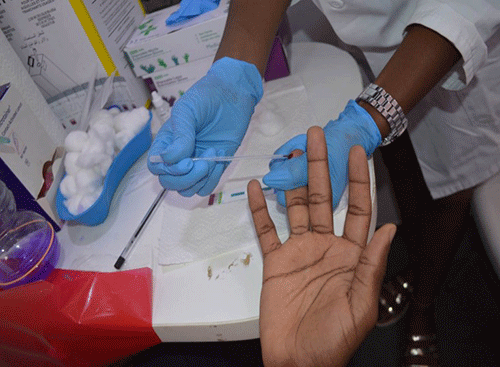The US embassy’s Chargé d’Affaires Jessica Long said key population groups in Namibia continue to be vulnerable and affected by HIV due to certain risk behaviours as well as social and structural factors such as stigma and discrimination.
Long said this recently at the opening of the country’s first World Health Day Share Fair at Katutura’s UN Plaza. The fair was a networking event organised by a US government-funded Key Populations (KP) project called KP-STAR in commemoration of World Health Day.
Key populations are defined as groups who, due to specific higher-risk behaviours, are at increased risk of HIV, irrespective of the epidemic type or local context. Also, they often have legal and social issues related to their behaviours that increase their vulnerability to HIV.
“Gender-based violence also contributes to limited access to health services. Since the start of the project in April 2020, more than 2 000 HIV-positive KPs have been reached through testing, with almost all of them now on antiretroviral treatment,” stated Long.
UNAIDS considers gay men and other men who have sex with men, sex workers, transgender people, people who inject drugs and prisoners and other incarcerated people as the five main key population groups that are particularly vulnerable to HIV and frequently lack adequate access to services.
She added that 97% of those on treatment had their viral load suppressed, which means they cannot transmit HIV to others. The Key Populations - Strengthening Technical Assistance and Response (KP-STAR) through USAID/PEPFAR funding is responsible to reduce the incidence and mitigate the impact of HIV among key populations (KPs) in Namibia and strengthening KP-friendly health services in the country.
On the same occasion, health minister Dr Kalumbi Shangula said key populations are members of the community and like anyone, they equally have access to healthcare services and raising awareness about their health needs is one of the ways to increase access to health services.
The 2019 Namibia Integrated Biological and Behavioural Surveillance Surveys (IBBSS) states that HIV prevalence among key populations, specifically sex workers, was found to be approximately 21.3% in Windhoek, 44.2% Katima Mulilo and 20.3% Walvis Bay/Swakopmund, compared to 16% for the general population according to the Namibia Population-Based HIV Impact Assessment (NAMPHIA).
“This calls for concerted efforts to improve access to HIV service by members of our society whose HIV burden is huge compared to the rest of the population. Without addressing systemic and other barriers that limit key populations from fully utilising health services, the goal to reach epidemic control will remain unattainable,” he stated.
Shangula said: “This stark difference in HIV prevalence rates between key populations and the general population is mainly due to key populations not fully accessing health and social services, either due to societal attitudes, stigma and discrimination, or ignorance on their part, among others.”
He said the government has prioritised key populations and adolescent girls and young women, and greater male involvement in the National Strategic Framework (NSF) to promote and support programmes that prevent new HIV infections and reduce AIDS-related deaths among these prioritised groups.
Namibia has made strides toward the achievement of the UNAIDS 95-95-95 targets where 95% of people living with HIV know their HIV status; 95% of people who know their status are on treatment, and 95% of people who are on treatment have suppressed viral loads. So far Namibia is at 94-97-93.


